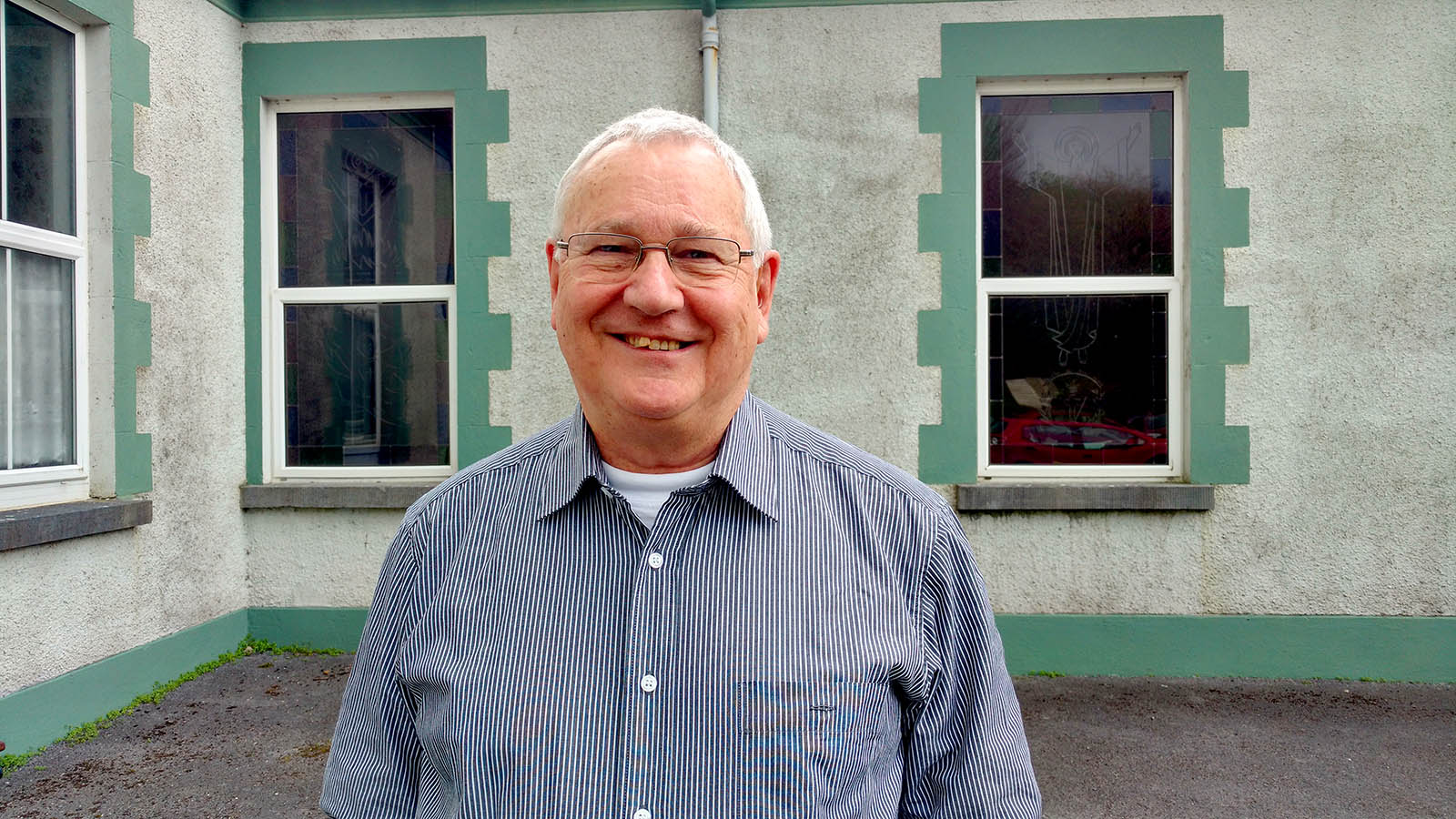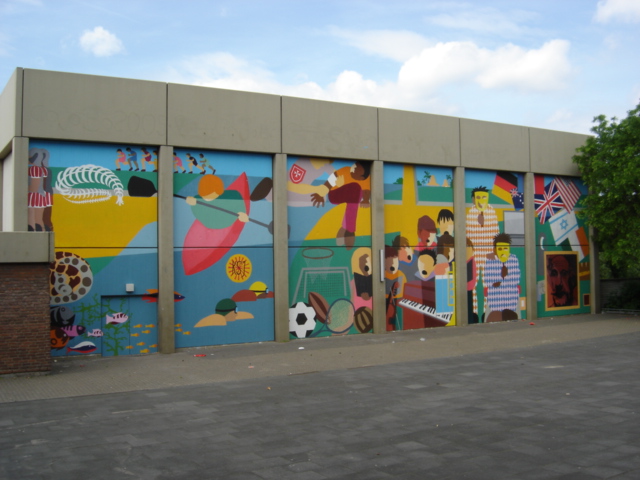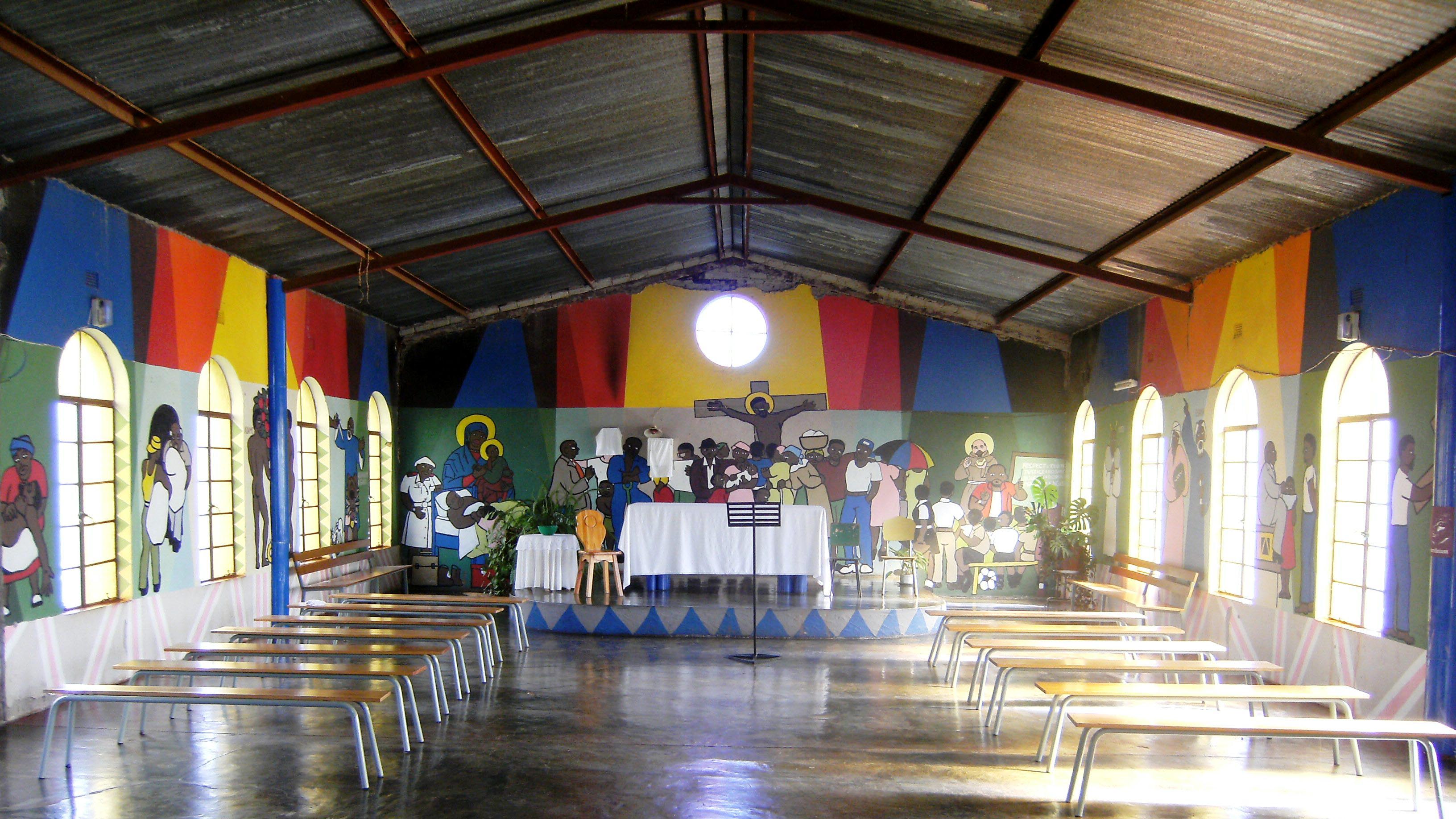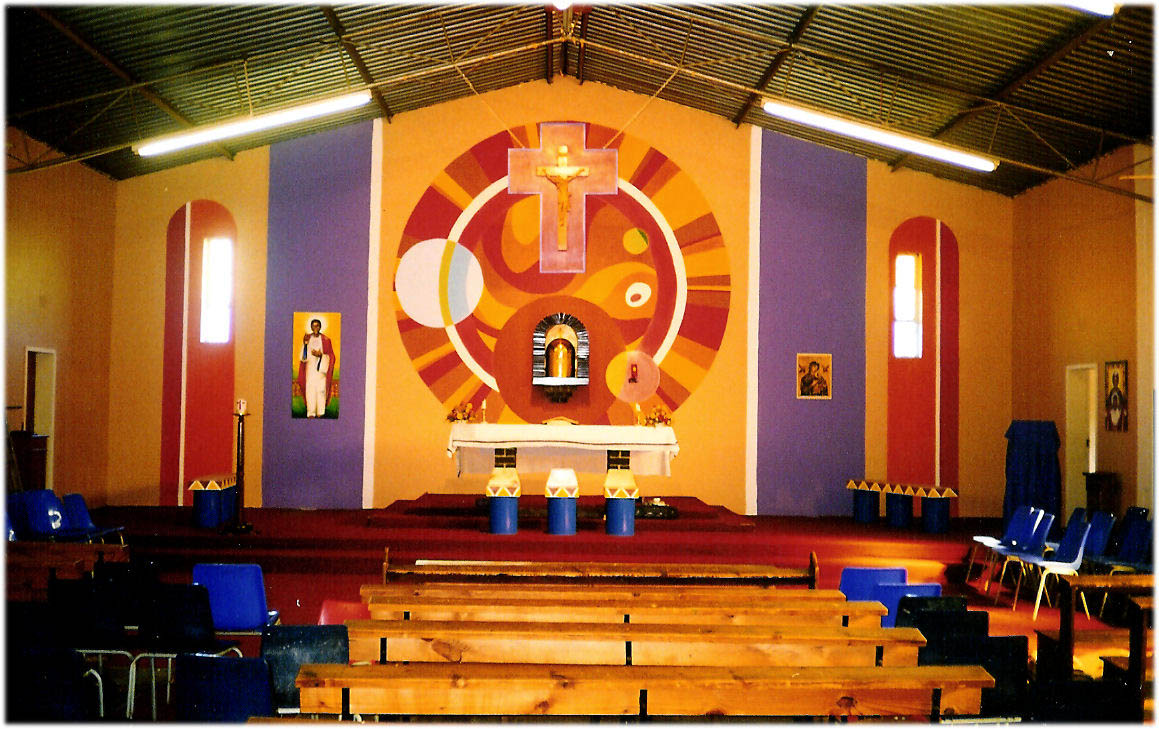(Netherlands) Jan Haen is a Redemptorist priest who is making a difference in the lives of people through art. What makes Fr. Jan different is his philosophy towards art. He does not paint for the people, but with the people. According to him “art is the language of the Soul, art in all forms.” Under the motto ‘Giving colour to life’ Jan has executed over 100 mural painting projects internationally, in churches, schools, social institutions and other places. At present, he is working on ‘Translating’ the Bible, Old and New Testaments in ‘comic strips.

Though he was born in 1944 in Eindhoven, the Netherlands he had to move to South Africa in 1953 along with his parents. While in South Africa he found his vocation to religious life and joined the Redemptorist in Pretoria, South Africa in 1956. After finishing the Novitiate in Heathfield, Cape, South Africa in 1963 he moved to Hawkstone, England for further studies from 1964 to1970. He was ordained a priest, in Hawkstone on 31st, August 1969. Jan studied Psychology and History of Art at the University of Pretoria, South Africa where he later served as the student Chaplain from 1970 to 1978. He also served as the Secretary to the Southern African Catholic Bishops Conference in Pretoria during the period of 1974 to 1978. Due to the change in politics in South Africa, he was expelled from the country by the Apartheid Government in 1978. Then he joined the St. Clement’s Province. He was a Project Artist for the Collaboration Art Projects International Foundation, the Netherlands from 1995 to 2017.

 “Art was always in my life. Serious artwork, like art projects that I have done for the churches, started in 1994,” says Jan Haen. “That happened when I was able to go back to South Africa after being expelled in 1978. I was asked by a confrere to paint a small little Church. I took the initiative of painting the church with the aboriginals. First, I spoke with the parishioners, and I allotted a space on the walls of the church for each of them. I asked them what biblical picture they wanted to paint on the wall. The answers were very interesting. According to their interests very quickly I drew an outline of all the images they liked to see on the wall and asked them to paint. That made such an impression that my confreres asked me to come back again and after a year they gave me two other churches to paint. That was the beginning of a serious of projects of painting churches. Very many of them were at the poor localities of South Africa.” Jan has also done a lot of projects in Europe. He was involved in some social projects for people who live in the street in Germany and England. There are a number of projects in his credit in Ireland, Austria and Ukraine. Recently Haen has done a number of portraits of the Redemptorists Saints and blessed.
“Art was always in my life. Serious artwork, like art projects that I have done for the churches, started in 1994,” says Jan Haen. “That happened when I was able to go back to South Africa after being expelled in 1978. I was asked by a confrere to paint a small little Church. I took the initiative of painting the church with the aboriginals. First, I spoke with the parishioners, and I allotted a space on the walls of the church for each of them. I asked them what biblical picture they wanted to paint on the wall. The answers were very interesting. According to their interests very quickly I drew an outline of all the images they liked to see on the wall and asked them to paint. That made such an impression that my confreres asked me to come back again and after a year they gave me two other churches to paint. That was the beginning of a serious of projects of painting churches. Very many of them were at the poor localities of South Africa.” Jan has also done a lot of projects in Europe. He was involved in some social projects for people who live in the street in Germany and England. There are a number of projects in his credit in Ireland, Austria and Ukraine. Recently Haen has done a number of portraits of the Redemptorists Saints and blessed.

 Most of his art projects were centred on poor people. He painted in prisons and streets trying to bring some colour in their lives. The very act of involving the people in painting gave them so much of fulfilment in the process. They discuss art, develop art scenes and give life to the imagination by putting them on the walls. Art becomes their story and they find some ‘colour’ in their lives. All the major works of Jan Haen are mural paintings. For him, art is an attempt to portray the story of Christ for all those who are seeking God. Though he is Redemptorist missionary he takes visual art as his field of mission. Speaking about the Redemptorist tradition he said, “St. Alphonsus and St. Gerard were artists who tried to communicate the Gospel message with the people of their own time. Their paintings of Crucified Christ were great tools for preaching to ordinary people. I am also trying to reach out to the wounded people of our own time with the gift of art.”
Most of his art projects were centred on poor people. He painted in prisons and streets trying to bring some colour in their lives. The very act of involving the people in painting gave them so much of fulfilment in the process. They discuss art, develop art scenes and give life to the imagination by putting them on the walls. Art becomes their story and they find some ‘colour’ in their lives. All the major works of Jan Haen are mural paintings. For him, art is an attempt to portray the story of Christ for all those who are seeking God. Though he is Redemptorist missionary he takes visual art as his field of mission. Speaking about the Redemptorist tradition he said, “St. Alphonsus and St. Gerard were artists who tried to communicate the Gospel message with the people of their own time. Their paintings of Crucified Christ were great tools for preaching to ordinary people. I am also trying to reach out to the wounded people of our own time with the gift of art.”

 The moment of creation is a time of contemplation for Jan Haen. “When I am painting (not when doing big projects), it is a contemplative experience for me. Contemplation creates a space to use our imagination. It is a wonderful time of grace,” he states. “We need to be open to new ways of reaching out to people… need to be creative in visualizing and expressing…Be daring to break traditions,” Jan reminds the younger confreres. When he started to work in South Africa he was very cautious about the culture and mindset of people towards art. So he always tried to interpret the gospel in the African semantics of art. That is why he always portrayed in African figures and forms while he was in South Africa so that people could identify themselves with the Bible characters more easily.
The moment of creation is a time of contemplation for Jan Haen. “When I am painting (not when doing big projects), it is a contemplative experience for me. Contemplation creates a space to use our imagination. It is a wonderful time of grace,” he states. “We need to be open to new ways of reaching out to people… need to be creative in visualizing and expressing…Be daring to break traditions,” Jan reminds the younger confreres. When he started to work in South Africa he was very cautious about the culture and mindset of people towards art. So he always tried to interpret the gospel in the African semantics of art. That is why he always portrayed in African figures and forms while he was in South Africa so that people could identify themselves with the Bible characters more easily.
Biju Madathikunnel, CSsR






